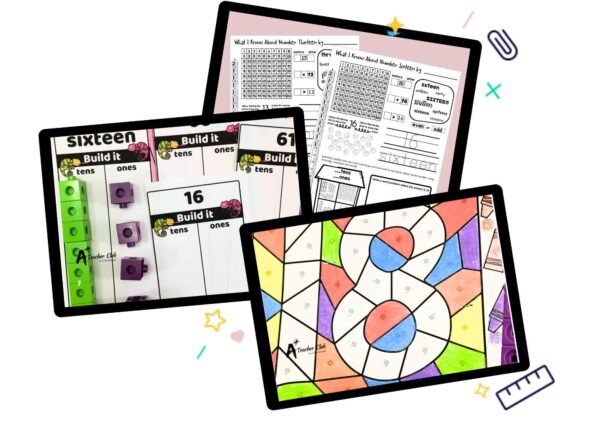Mastering Teen Numbers: Strategies for Foundation & Year 1
Number Sense
Teaching teen numbers can be surprisingly tricky. While students often breeze through counting to ten, the numbers 11 to 19 introduce a new level of complexity that can trip up even confident learners.
This blog post explores why teen numbers are difficult, how to address the most common misconceptions, and what strategies help students build deep understanding and number sense.
Teen numbers aren’t just “more numbers”—they introduce a place value structure where the digits represent tens and ones. This is a big conceptual leap.
Why Are Teen Numbers So Hard?
Teen numbers (11–19) aren’t just “more numbers”—they introduce a place value structure where the digits represent tens and ones. For early learners, this shift from rote counting to understanding number structure can be challenging.
They belong to a group sometimes referred to as tie numbers (from the old English word for “ten”), meaning “ten and some more.”
But it gets more confusing when students start to encounter numbers that end in “-ty”, such as twenty, thirty, forty, and so on. These numbers represent full groups of ten (e.g. twenty = 2 tens), and children often mix them up with the teen numbers.
Here are some of the key challenges:
1. Misleading Language and Number Names
- The words eleven and twelve don’t follow a “ten and some more” structure.
- Numbers like thirteen, fourteen, fifteen may sound like they come before their base number (e.g. “fifteen” before “five”).
- There’s no consistent pattern in the naming of teen numbers.
2. Digit Reversal Confusion
Students often reverse the digits and say 41 instead of 14, or read 13 as 31, because they are still learning that the first digit in a teen number represents ten, not one.
3. Weak Understanding of Place Value
Without concrete materials, students may see 17 as two separate digits rather than “1 ten and 7 ones”.
Teen Number Breakdown: What Makes Each One Tricky?
Let’s take a closer look at the teen numbers and why students might struggle with each:
Strategies That Work: Teaching Teen Numbers Effectively
1. Build the Idea of ‘10 and Some More’
Emphasise that each teen number has one full ten and some extra ones. Use this structure in your everyday maths talk. Prompt – “14 is one ten and four ones. Let’s build it together.”
2. Use Visuals and Hands-On Materials
Manipulatives like MAB blocks, pop sticks in bundles, tens frames, and linking cubes bring abstract numbers to life.
3. Create Number Talks Around Teen Numbers
Use short daily routines where students break down and describe a number in multiple ways.
4. Draw and Write
Encourage students to draw tens and ones, then write the number as a numeral and in words to reinforce multiple representations.
Wrapping Up: Build Confidence with Consistency
Mastering teen numbers requires a consistent approach to language, visuals, and hands-on experiences. By breaking down these “tricky teens” and giving students repeated opportunities to explore their structure, you’ll help your class build confidence and clarity.
Explore our Teen Number Resource Collection to get started with ready-to-go activities aligned with these strategies.
Explore tags
Teen Number Activities

Teen Numbers - Star Gazing Theme

Teen Numbers - Worksheets

Teen Numbers - Construction Theme
Can't find what you're looking for?
Send us a request! Use this form to request a resource. Please give details of the learning area, topic, year level, curriculum links. We’ll be happy to take a look to see if we can fit it in. Unfortunately a request does not guarantee we will be able to make it!
"*" indicates required fields
